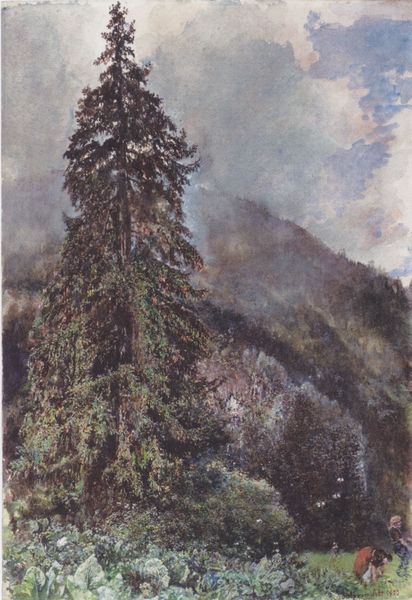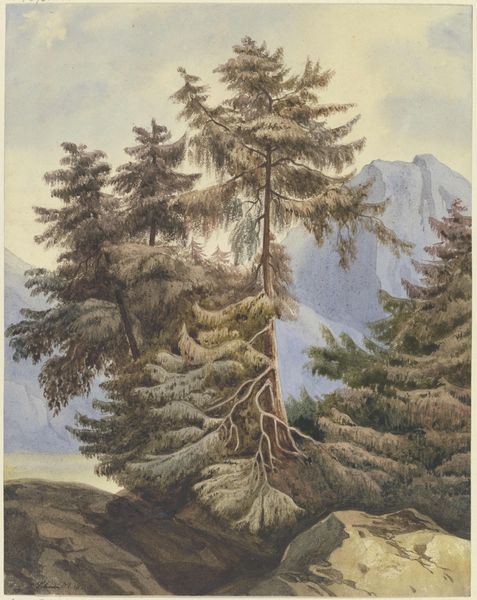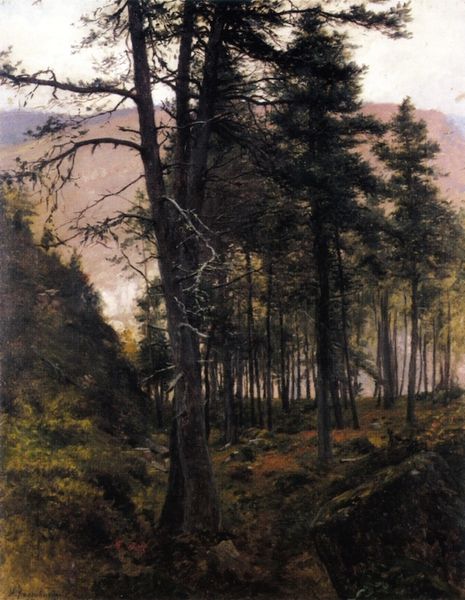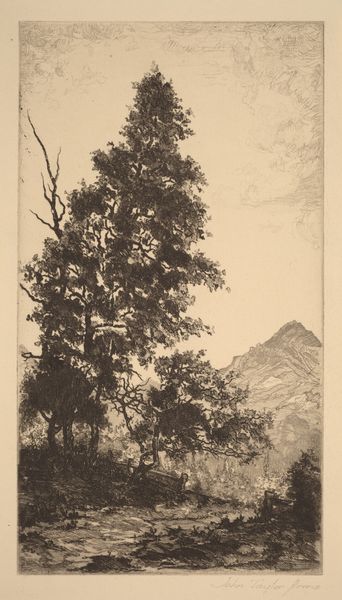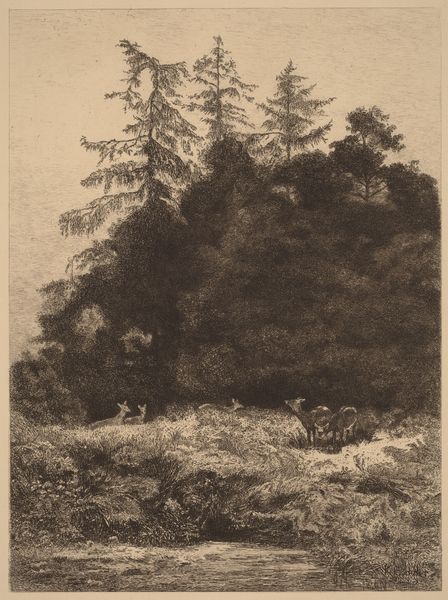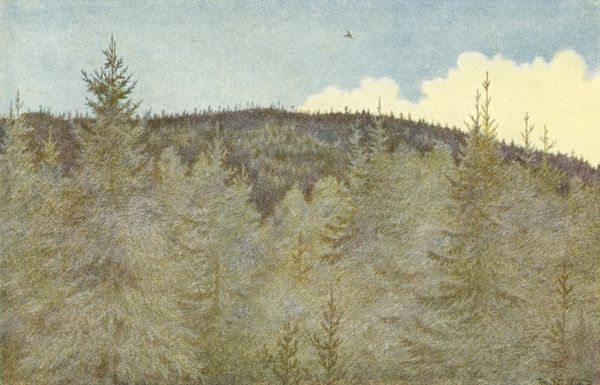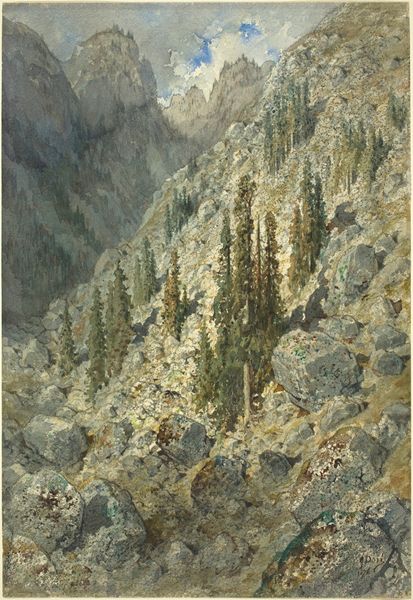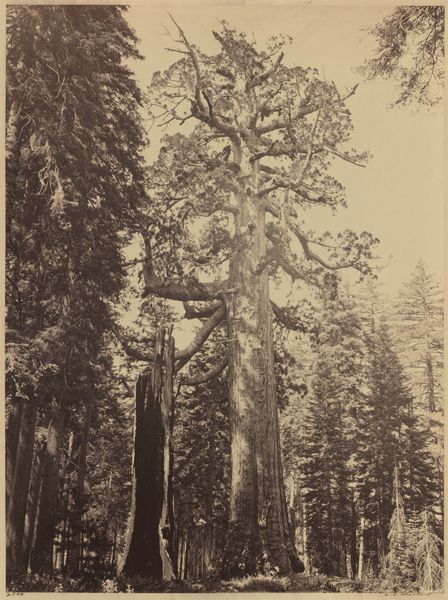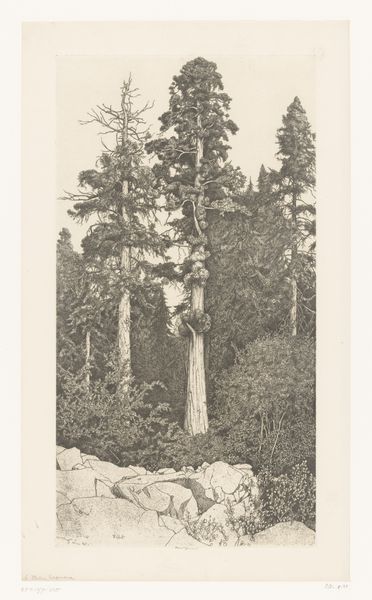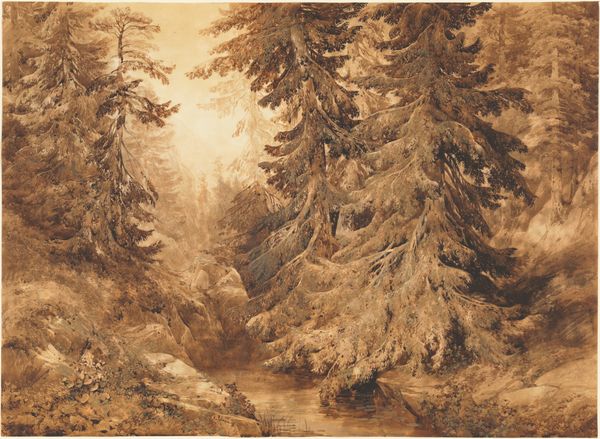
Copyright: Public domain
Editor: Here we have Rudolf von Alt's "The Large Pine in Gastein," created around 1895 using tempera and watercolor. It gives such a grand and humbling impression of nature! I’m especially curious about the artist's choice of media. What do you see in this piece that I might be missing? Curator: The combination of tempera and watercolor, used *en plein air*, offers us a key insight. Notice how this wasn’t merely about depicting a pretty view; it’s about the labor of landscape, both artistically and literally. Think of the process of making tempera, grinding pigments, and the physicality of watercolor painting on site. It highlights the artist’s hand and his investment in that particular locale. Editor: I see what you mean! So the work itself is a product of labor. I’m struck by the figures toiling in the field, nearly dwarfed by the pine. What relationship are we supposed to see between their labor and Alt’s artistic process? Curator: Precisely! These labourers are materially engaged with the land, transforming it. And similarly, von Alt’s choice of painting the same scene demonstrates his awareness of the labor that went into art production. What do you think it does to the art market to represent this common labour instead of kings or war scenes? Editor: Hmm, almost like he’s democratizing art by focusing on everyday activities and connecting it to material production. It prompts you to really think about what's valued and who does the valuing. Curator: Exactly! This painting then is both a romantic vision and a document of social practices surrounding the environment. The artwork urges a consideration of the very foundations of artistic value in the late 19th century. Editor: Well, I never considered how intertwined labor and landscape could be. Thanks to that perspective, I am never going to see landscape art the same way!
Comments
No comments
Be the first to comment and join the conversation on the ultimate creative platform.
